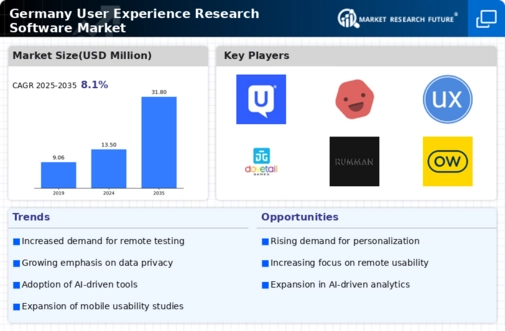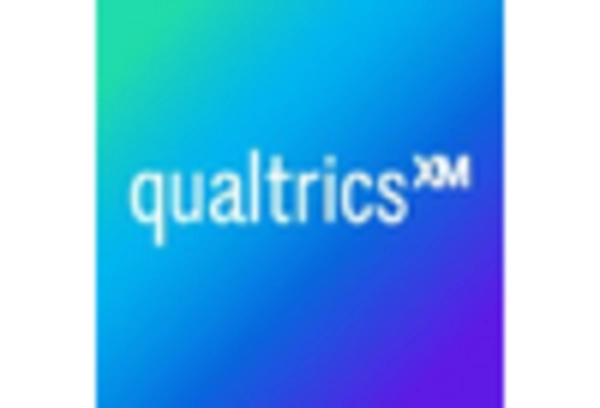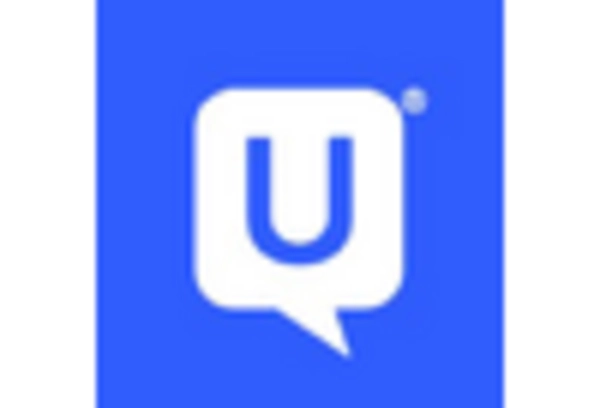Shift Towards Remote User Testing
The shift towards remote user testing is reshaping the user experience-research-software market in Germany. With the increasing adoption of remote work and digital collaboration tools, organizations are finding it more feasible to conduct user testing remotely. This approach not only reduces costs associated with in-person testing but also expands the pool of participants, allowing for more diverse feedback. As a result, the demand for software that supports remote testing methodologies is on the rise. The user experience-research-software market is expected to witness a growth rate of 10% annually as companies adapt to this new paradigm. This shift indicates a broader trend towards flexibility and accessibility in user research practices.
Emphasis on Compliance and Data Privacy
In the context of the user experience-research-software market, compliance and data privacy have emerged as critical drivers in Germany. With stringent regulations such as the General Data Protection Regulation (GDPR) in place, organizations are increasingly focused on ensuring that their user research practices adhere to legal standards. This emphasis on compliance is prompting software developers to incorporate robust data protection features into their solutions. As companies prioritize user trust and data security, the demand for compliant user experience-research software is likely to grow. This trend not only influences software development but also shapes the overall landscape of user research methodologies in Germany.
Rising Demand for Enhanced User Insights
The user experience-research-software market in Germany is experiencing a notable surge in demand for enhanced user insights. Companies are increasingly recognizing the value of understanding user behavior and preferences to drive product development and marketing strategies. This trend is reflected in the growing investment in user research tools, with the market projected to reach €500 million by 2026. Organizations are prioritizing user-centric approaches, leading to a greater reliance on software solutions that facilitate comprehensive user testing and feedback collection. As businesses strive to improve customer satisfaction and loyalty, the emphasis on gathering actionable insights is likely to propel the growth of the user experience-research-software market.
Integration of Data Analytics Capabilities
The integration of data analytics capabilities into user experience-research-software is becoming increasingly prevalent in Germany. This trend allows organizations to derive meaningful insights from user data, enhancing their ability to make informed decisions. By leveraging advanced analytics, companies can identify patterns and trends in user behavior, which can significantly improve product design and user engagement. The user experience-research-software market is projected to grow at a CAGR of 12% over the next five years, driven by the demand for data-driven decision-making. As businesses seek to optimize their offerings, the incorporation of analytics into research software is likely to play a crucial role in shaping the future landscape of the market.
Growing Investment in User Experience Training
The growing investment in user experience training is significantly impacting the user experience-research-software market in Germany. Organizations are recognizing the importance of equipping their teams with the necessary skills to effectively utilize research software and interpret user data. This trend is leading to an increase in training programs and workshops focused on user experience methodologies. As companies strive to enhance their user research capabilities, the demand for software that supports training initiatives is likely to rise. The user experience-research-software market is projected to benefit from this investment, as a well-trained workforce can leverage software tools more effectively, ultimately leading to improved user experiences.

















Leave a Comment